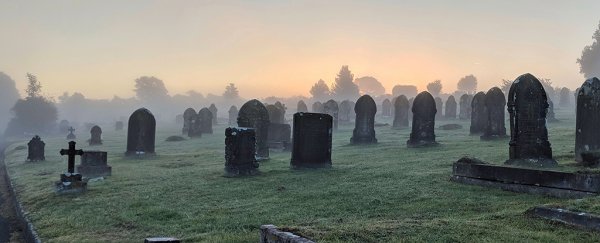People just keep on dying, which means more and more room is needed for those who want to be buried – and one expert has come up with an environmentally friendly solution to the issue of graveyard overcrowding.
UK public health consultant John Ashton is proposing green 'burial corridors' along transport links – roads, railways and footpaths – using up spare land that's otherwise left untouched and easing pressure on increasingly crowded burial plots.
Add in biodegradable burial materials like those being trialled in the US, such as straw and wood chips, and you've got a solution that's easy on the planet, by contributing to the natural cycle of growth and decay.
"What is needed now is a grand strategic vision for green burial places to reclaim our cities… and for it to be a requirement for trunk transport routes to include linear wildlife burial corridors alongside them," says Ashton.
"It is time to revisit the public health roots of human burial and connect them to a new vision for a planet fit for future generations."
As it stands it's not the most detailed plan in the world, but Ashton points to previous attempts to innovate in the business of body disposal – from London's Magnificent Seven cemeteries of the 19th century to modern-day biodegradable coffins.
It's not just the remains of coffins that leave a polluting legacy, Ashton argues, but also the chemicals used in the embalming process. The traditional Muslim approach of simple cotton shrouds is one example to follow, he says.
Brownfield sites in towns and cities that aren't being developed could be repurposed as eco-friendly burial plots as well, Ashton proposes. The idea might also be able to keep a natural corridor between areas of urban sprawl.
"I think there should be a buffer zone around the main roads of trees," Ashton told New Scientist. "Some of those areas, currently agricultural land being put under pressure to build houses on, could be designated as green burial sites, particularly ones that are near to towns."
Cremation has helped to ease pressure on graveyards – around 50 percent of people in the US and just about everyone in Japan gets cremated, for example. The burning process uses up energy and contributes to air pollution, however, and many urns end up being buried anyway.
Burial traditions are an important part of any culture, from Egyptian mummies to Viking sea burials, and in our age of climate crisis and population overcrowding, an environment-first approach makes a lot of sense.
Having your remains at the side of a motorway might not sound all that appealing, but you will at least be contributing positively to the environment after you're gone.
And for everyone left behind, It might take a while to get used to regular commutes running through gardens of remembrance, but new ideas are going to be needed sooner or later – the graveyards of Britain are expected to run out of space within the next five years.
"You have got 500,000 to 600,000 deaths a year in England and Wales so if everybody who died had a green burial – I am not saying that is going to happen – but if everybody did we could be planting half a million trees a year," Ashton told Nicola Davis at the Guardian.
The research has been published in the Journal of the Royal Society of Medicine.
